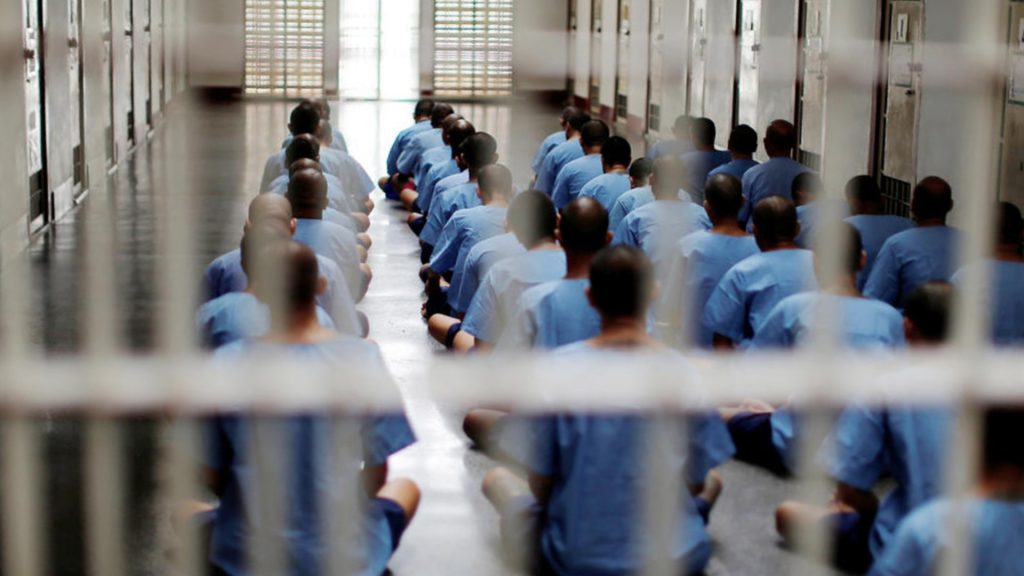 Oleh Dr. Melanie Siaw
Oleh Dr. Melanie Siaw
She is a founder of Alternatives to Violence Project (AVP) Malaysia.
Since 2013, Malaysia has had more than 430 terror-related arrests and the foiling of over 30 terror plots.1 Malaysia also faces the threat of violent extremists from neighbouring Thailand, Philippines and Indonesia. Local and regional violent extremist organisations use Malaysia’s strategic location to recruit, plan and coordinate attacks, transport weapons, operatives, finances and supporters to other regional and global organisations.2
Link between Trauma and Violent Extremism
Among the many pathways to violent extremism, trauma is a key factor in personal and collective violence in radicalisation studies. 345 Trauma refers to an event or series of events that causes a person to be overwhelmed by a perceived threat, and the deep patterns of emotional distress that may result for the person.6 Over time, trauma alters brain structures and chemicals. It causes maladaptive responses to emotion, cognition, social interaction and behaviour. The risk for hostility, anger moderation difficulties and distrust also rises.7
The effects of trauma and the adoption of maladaptive coping mechanisms might increase the risk of becoming radicalised and committing future violent acts.89 In an interview with 220 ISIS returnees, defectors, and prisoners, 11.6% of men and 23.6% of women reported that they had experienced prior trauma before engaging in terrorism.10 They may be significantly under-reporting. Another study in Africa demonstrated that a majority pointed to traumatic event(s) that triggered their decision to join a violent extremist group.11

Causes of Personal and Collective Traumas
Trauma related to adverse childhood experiences can push a person towards violent behaviours including abuse, neglect, substance abuse or mental illness, parental separation or divorce, witnessing violence towards a caregiver or having an incarcerated household member. In a systematic review, half 12 of 25 studies highlighted the effect of adverse childhood experiences on the development of extremist attitudes and/or behaviour.13 In Malaysia, the prevalence of child abuse and neglect has been steadily increasing over 2- to 3-fold.1415 Therefore, the link of childhood trauma and violent extremism becomes a concern.
Trauma can also happen at a societal level. In Malaysia, the Malay people were oppressed, humiliated and dispossessed of their lands for nearly 450 years’ of exploitation, institutionalised racism and control by European colonial powers.1617 The Indigenous people also suffered greatly during colonisation and they continue to experience exploitation, discrimination and violation of their customary land rights.1819 The combined injustices with learned helplessness and disempowerment were traumatic for the Indigenous and Malay people. The Indian and Chinese migrants also suffered from varying traumatic experiences due to exploitation and discrimination.20 Despite attaining citizenship, they continue to experience institutionalised racism and discrimination due to government policies on education, housing and finance.21
Consequences of Trauma on Society
Collective trauma from colonisation, World War II, ethnic riots and Communist insurgency can be passed on to younger generations who do not have direct exposure to the events. One study showed that children of war survivors exhibited over-identification with parents’ experiences and transmission of fear and mistrust.22 Collective trauma can damage the bonds attaching people together and impairs the prevailing sense of communality.23 The late Prof Emeritus Datuk Dr Khoo Kay Kim stated, “After 1969 (riot) we became vulnerable. Each race is told that it is somebody else’s fault. We expect our leaders to play a part in defusing tensions, but instead there are many who thrive on constantly fuelling the fears of the people”.24 Following the 1969 riot, interethnic conflicts increased and ethnic relationships deteriorated.
Trans-generational transmission of collective trauma might have a role in the radicalisation of future generations who consider themselves historically victimised by the “Other”.25 Unaddressed past collective traumas create a conspiracy of silence that contributes to reproducing the fear of “the unknown” and fuels xenophobic perceptions about the “Other” among post-war generations.2627 Bosnia and Herzegovina is an exemplary case of how collective traumas can transfer across generations and radicalise the people towards violent extremism that resulted in widespread genocide.28
In Malaysia, violent conflicts with ethnic and religious undertones have been occurring since 1945 but these conflicts have hiked significantly following the 2018 general election and transition of a new government.293031 A truth and reconciliation process uncovers pertinent facts, distinguishes truth from lies, and allows for acknowledgement, appropriate public mourning, forgiveness and healing. This process helps people recover from trauma and build resilience. However, this process has not taken place following various conflicts in Malaysia. The consequences of past and contemporary collective traumas and their role in driving or aiding radicalisation towards violent extremism require further study. At a personal and/or societal level, interactions of various risk factors either drive the radicalisation process or create conditions that are conducive for radicalisation.32 With stressors of daily life and social, environmental or personal factors, trauma increases a person’s vulnerability to radicalising into violent extremism.
Trauma caused by Violent Extremism
Involvement in violent extremism can also lead to trauma. In a repatriation of foreign fighters and their families from Syria to Kosovo (124 men, 38 women and 80 children), many returnees were exhibiting symptoms consistent with post-traumatic stress disorder (PTSD) and depression.3334 Currently, Malaysia uses a top-down, correctional approach to rehabilitation and reintegration of violent extremists that excludes the participation of civil society.35 This approach is not customised to the needs of violent extremists and risks alienating and retraumatising them.
Recommendations for an Impactful National Action Plan on Preventing and Countering Violent Extremism
Studies have demonstrated the link of trauma in radicalisation and violent extremism. Therefore, the National Action Plan on preventing and countering violent extremism can be shifted to a targeted, evidence-based rehabilitation and reintegration programme if trauma-informed research and practices are incorporated into the plan. The government should fund both governmental and civil society organisations in conducting research on trans-generational trauma and links between trauma and violent extremism. Local research can aid government and civil society to better understand and help traumatised individuals who might be vulnerable to radicalising into violent extremism.
Secondly, government should make research-based clinical trauma therapy available to treat trauma in Malaysian terrorist fighters in the detention centres and communities. In addition, the government should require education and social services to be trauma-informed to prevent further harm and retraumatisation during the reintegration of former violent extremists. The community also benefits from accessing trauma-informed classrooms and services.
Thirdly, a truth and reconciliation process should be conducted following public injustices that resulted in violent conflicts. The process should be initiated by the government but led by a group of respected people. A successful truth and reconciliation process would aid transition from conflict and tension among different ethnic groups to peace and connectedness in the community. Thus preventing and countering radicalisation and violent extremism.
Lastly, the government should engage civil society organisations with tools for trauma recovery, resiliency, community building and empowerment and make these tools available as general public health knowledge and practice in the community.363738 This could create a community with increased trust and empathy as well as social resilience against violent extremism.
References:
- Henkin Samuel, Hafiza Nur Adeen Nor Ahmad, Ramli Dollah, et al. Divergent dimensions of radicalisation risk: migration and violent extremism in Sabah, Malaysia. Desk Study Report to the Bureau of Conflict and Stability Operations, U.S. Department of State. College Park, MD, START, December 2020.
- Ibid.
- Simi P, Bubolz BF, McNeel H, et al. Trauma as a precursor to violent extremism. The National Consortium for the Study of Terrorism and Responses to Terrorism (START), 2015.
- Vergani M, Iqbal M, Ilbahar E, et al. The three Ps of radicalisation: Push, pull and personal. A systematic scoping review of the scientific evidence about radicalisation into violent extremism. Studies in Conflict & Terrorism 2020;43:854-854.
- The Center for the Study of Trauma and Radicalisation [article online], Available from https://thecstr.org/mission.
- Hoover NC. Creating cultures of peace: a movement of love and conscience. Conscience Studio, 2018.
- Neller DJ, Fabian JM. Trauma and its contribution to violent behaviour. Criminal Justice Matters 2006;66:6-7.
- Ibid.
- Windisch S, Simi P, Blee K, et al. Measuring the extent and nature of adverse childhood experiences (ACE) among former white supremacists. Terrorism and Political Violence 2020:1-22
- Speckhard A, Ellenberg MD. ISIS in their own words: recruitment history, motivations for joining, travel, experiences in isis, and disillusionment over time – analysis of 220 in-depth interviews of ISIS returnees, defectors and prisoners. Journal of Strategic Security 2020;13:82-127
- Journey to extremism in Africa. United Nations Development Programme (UNDP): Regional Bureau for Africa. 2017
- Rusli MHM. The cessation of Penang: was Kedah a sovereign state? Malaysia, Malaysiakini, Nov 3, 2021.
- Harpviken AN. Psychological vulnerabilities and extremism among western youth: a literature review. Adolescent Research Review 2020;5:1-26
- Cheah IG, Choo WY. A review of research on child abuse in Malaysia. The Medical Journal of Malaysia 2016;71:87-99.
- Vinitha P, Rohaizah B, Faiza MR. Suspected child abuse and neglect cases in a single tertiary hospital in Malaysia – a 5-year retrospective study. The Medical Journal of Malaysia 2020;75:548-554.
- Rusli MHM. Supra note 12.
- McQuade J. Earth day: colonialism’s role in the overexploitation of natural resources. The Conversation, April 18, 2019.
- Encroachment on Orang Asli customary land in Malaysia: causes & solutions. Sahabat Alam Malaysia (SAM) and the Jaringan Kampung Orang Asli Semenanjung Malaysia (JKOASM). 2017.
- Sia A. Orang Asli victims of racism and neglect. Malaysia, Malaysiakini, 2019.
- McQuade J. Supra note 17.
- Kua KS. Time to end racial discrimination in Malaysia. Malaysia, Malaysiakini, 20 March 2015.
- Rowland-Klein D, Dunlop R. The transmission of trauma across generations: identification with parental trauma in children of holocaust survivors. The Australian and New Zealand Journal of Psychiatry 1998;32:358-369.
- Erikson KT. Everything in its path. New York, NY, Simon and Schuster, 1976.
- Vengadesan M. May 13, 1969: truth and reconciliation. Malaysia, The Sunday Star, 2008.
- Buljubašić M, Holá B: Historical trauma and radicalisation. The Alantic Initiative: Center for Security and Justice Research. October 2021.
- Ibid.
- Dass D. Is multi-racialism a problem for Malaysia? Malaysia, Malaysiakini, April 23, 2019
- Buljubašić M, Holá B. Supra note 25.
- Vengadesan M. Supra note 24.
- Shamsuddin A. National action plan on preventing and countering violent extremism: civil society deserves a seat at the table. Kuala Lumpur, Malaysia, INITIATE.MY, Policy Brief 1/2022
- Normative beliefs about violent extremism and its association with demographic, psychosocial and health characteristics: a study of young adults in Selangor and Sabah. IMAN research. January 2019
- Vergani M, Iqbal M, Ilbahar E. Supra note 4.
- Bytyqi K, Mullins S. Returnee foreign fighters from Syria and Iraq: the Kosovan experience. Combating Terrorism Center, 2019, p. 25 – 30
- Manisera S. After ISIS: how Kosovo is rehabilitating women and children repatriated from Syria. The National, July 25, 2019
- Badrul Hisham Ismail. On rehabilitation and reintegration. The Panji Alam Monographs, 20 November 2017
- Vergani M, Iqbal M, Ilbahar. Supra note 4.
- Is Alternatives to Violence Project trauma therapy? [article online], 2021. Available from https://avpnebraska.files.wordpress.com/2021/07/avp-and-trauma-research-6-15-2021.pdf. Accessed Dec 22 2021
- Phillips B. An evaluation of AVP workshops in Aotearoa/New Zealand. AVPA Inc. Wellington, New Zealand, 2002
